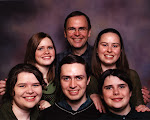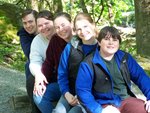Fortunately God’s angels were able to keep both me and my
car from stumbling and we arrived at the one-room village community lodge at 9
a.m. For 30 minutes we greeted the
villagers as they entered. This was the
home of one of our BOOST graduates and he had texted the village leaders to
gather the people to hear a presentation about how to improve their community.
For the previous 3 days, my fellow
missionary/agriculturalist had trained us on Community Development – a process
on how to help community members improve their livelihood while allowing us to
cultivate relationships to share the gospel.
We learned that there are two categories of human needs: acute and
chronic. Acute needs arise from
disasters (wars, floods, famine, etc.) and require immediate outside resources
to relieve hunger and meet other human needs.
Chronic needs develop over longer periods and are the result of deeper
problems within the community.
Interestingly, most benevolent organizations meet chronic
needs with outsiders coming into the community to distribute food, provide
health care, build roads, improve sanitation, and other give-aways. Aside from being very expensive, such an
approach usually robs the native people of their self-dignity, creates dependency
on the outsiders, and hinders the people from developing their own creative
solutions. Haiti, for example, receives
more outside humanitarian aid than any other country, yet it remains one of the
poorest.
As the villagers seated themselves, we began asking
questions about the community. We
explained that we were not there to give away anything, but instead to help
them identify their own community problems, prioritize them, and using readily
available resources to come up with an action plan to begin solving the
problems. The process would take several
weeks and involve several meetings. But
the goal was to strengthen the community by educating them how to creatively
meet their own needs: physical, spiritual, psychological, social, and economic.
Interestingly, Jesus and His disciples met human needs while
sharing the gospel twice as many times as when they shared the gospel
alone. They healed, fed the hungry, and
delivered from evil spirits, while sharing the gospel message. When we do community development, our goal is
to demonstrate God’s love by building capacity and confidence in a
community. As we go through the process,
we build relationships. More times than
not, they inquire why we are there to help them. When we share the gospel, they are far more likely
to listen and respond, knowing we are there to help them.




































No comments:
Post a Comment